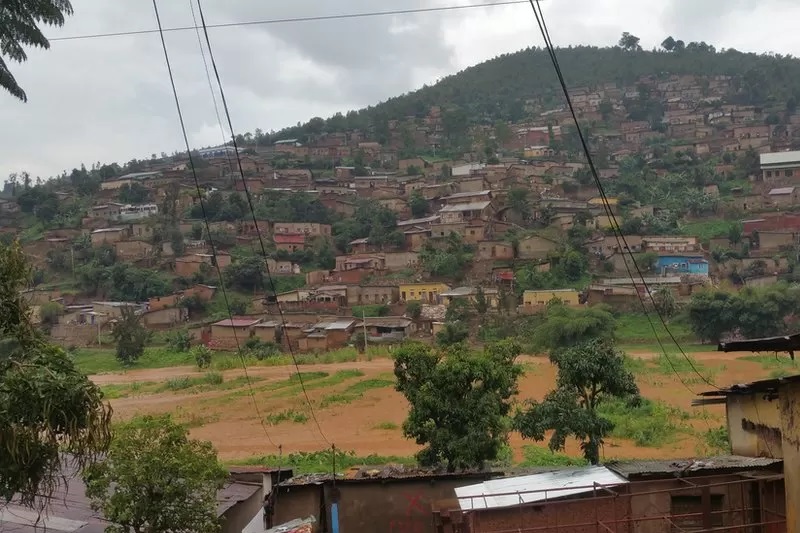Floods and landslides ripped over Rwanda on Wednesday, leaving at least 130 people dead and many thousands more without homes. On Thursday, Rwandans mourned the loss of loved ones and homes that were devastated as a result of the natural disasters. In the aftermath of a natural disaster that was caused by torrential rains in a mountainous and hilly country, families were making preparations to bury their loved ones as the government was still tallying the cost of the calamity.
In numerous regions of the country, particularly the Western Province near Lake Kivu, which was where the worst reports of destruction were received, rivers of mud were responsible for obliterating buildings and other forms of infrastructure as well as closing roadways.
“I found my child buried among boulders and bricks that had fallen on him during the heavy rains. He had been buried for quite some time. Anonciata, who only provided one name, told AFP that the man had passed away at the hospital in the severely affected district of Karongi. “It is quite distressing for all of us in the family. In addition to that, one of my other children had a serious brain injury. I hope and pray that he makes it.
The survivors in another severely hit district, Rubavu, were trying to come to terms with the magnitude of the destruction while at the same time acknowledging their blessings. Jacqueline Mukamana hurriedly left her house at midnight after receiving a warning from her neighbors that the river was rising, only to return to discover that the water had taken it away. She reported that “our house and everything else” had been ruined in the incident.
Paul Bizimana, another resident, expressed his gratitude that he was able to save his children and other members of his family, saying, “I managed to rescue my kids and family members.” “At least they are safe.”
Related Posts
The administration was working around the clock to get urgent supplies to the districts that were affected the hardest, where people had taken refuge in tents. Because the rivers are still raging and the land is unstable, they have been advised to remain there until the rain stops. There is a risk of additional mudslides and flooding during this time.
“As of this moment, there have been 130 confirmed deaths.” Alain Mukuralinda, a deputy government spokeswoman, told AFP that counting was still going on but that they did not yet have an accurate tally of the entire number of individuals who were homeless. What we do know is that more than 5,100 homes were destroyed, all of which had families living in them at the time of the disaster. A total of 2,500 additional homes have suffered some damage, according to the administration.
According to Mukuralinda, the accident left 77 individuals injured, including 36 who are still being treated in hospitals for critical injuries. Each family will get compensation from the government in the amount of 100,000 Rwandan francs, which is equivalent to $110, for every member of their immediate family who was killed in the disaster.
During the rainy seasons, the weather in East Africa can be quite dangerous, and in recent days, Uganda was one of the countries that experienced this, as a landslide was responsible for the deaths of six people. Heavy rains in southern Ethiopia last month caused flooding and landslides, which resulted in at least 14 fatalities, as well as the deaths of hundreds of livestock animals and the destruction of a large number of homes.
At least 65 people lost their lives in Rwanda as a result of the torrential rains that hit the region in May 2020, while more than 200 people lost their lives as a result of floods and landslides in the first four months of 2018.
Climate change, according to experts, is causing a rise in the frequency and severity of extreme weather events. Africa, which is responsible for the least amount of global warming, is feeling the brunt of the effects of this phenomenon.

